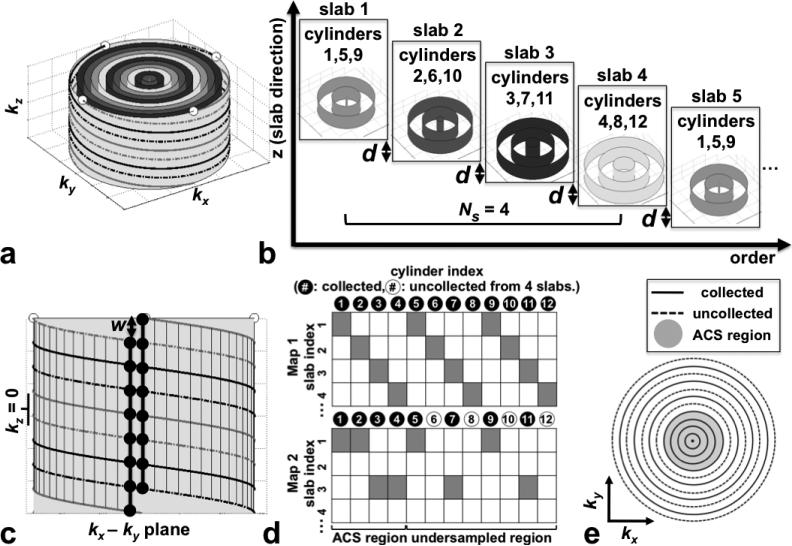FIG. 1.
SLINCYL acquisition. a: 3D concentric cylinders trajectory with Ncy = 12, Nintlv = 4, and Nrev = 2. The outermost cylinder is depicted with its surrounding helical interleaves. (white dots: end points of interleaves). Cylinders with the same color belong to the same subset as shown in (b). b: Data acquisition scheme. A subset of the cylinders is collected at each slab in an interleaved way, which repeats every Ns = 4 slabs. The slab location is incremented by a distance d equal to the resolution in z. c: View of the outermost cylinder in (a) from the side. With Nsamp (= 112) chosen as an integer multiple of Nslice (= 8), each sampling point is aligned in the kz direction with other Nslice – 1 (= 7) points as highlighted by two bold vertical lines (black dots: sampling points). Lines are shifted (w) with respect to each other in kz, which necessitates a linear phase correction in z after applying a 1D inverse Fourier transform in kz. d: Acquisition maps for Ns = 4 slabs (colored cells: locations cylinders are acquired). While the fully sampled map (top) collects a full set of 12 cylinders from four slabs, the undersampled map (bottom, reduction factor R = 2) does not collect cylinders 6, 8, 10, and 12 by skipping slabs with even indices. As the ACS region, the four innermost cylinders are fully sampled. e: The corresponding undersampling pattern of the k-space data in each slice. Rings 6, 8, 10, and 12 are uncollected as expected.

